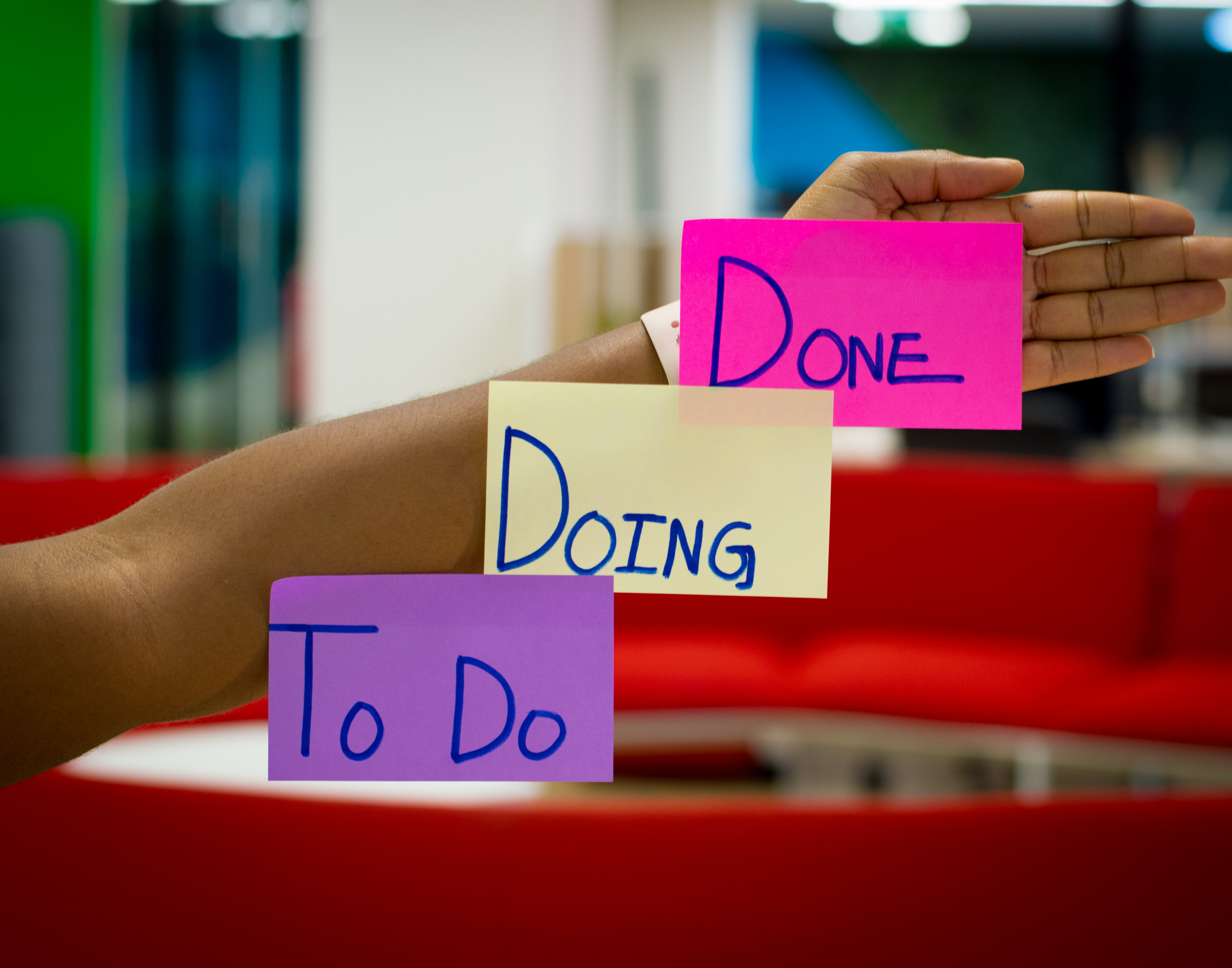
DEFINE
Know the problem
We begin our Innovator Activator Challenges. A brief activity to stimulate lateral thinking both outside and inside of the box. Limitations can squeeze creativity further! We meet an industry partner to discuss a sustainable solution and real-world applications. Our Journey Map begins to be charted, as we DEFINE the problem we aim to solve.
-
Learning Areas: English, HASS, HPE, Technologies, Science
Year Levels: 5-10
Teaching Time: 55 mins.
Resources required:
(Links to videos etc. are all available from the resources tab at the bottom)
• 3 collections of assorted random objects (12 units in each pack). For example recycling items, classroom supplies, garden items.
• Device capable of presenting a video to the class
• Journal (exercise or scrapbook) 1 per student
Level of teacher scaffolding: Medium – facilitate class discussion
Learning Intentions
Students can clearly define the task they are about to undertake. They have key information regarding:
• the purpose of the activity, task, or problem
• the target audience
• the required outcomes
• the timeframe for the task
• the mode of the task (collaborative or individual)
Keywords: Futurology, Carbon Zero,
-
5 minutes
Loose parts sorting
Divide class into 3 groups.
Each group is given a collection of random materials - 12 units.
Groups are asked to sort into collections of 4 according to their own criteria. Repeat process for 3 categories, and finally for 2 categories.
Share results with whole class.
Highlight that limiting criterion can force more creativity - criteria can be your friend.
-
5 minutes
Draw attention to word wall and review some definitions.
Add; Criteria, Innovation, Define
In regard to Solutions Thinking, 'Define' is the first stage. Identifying, recognising & understanding the problem you are trying to solve.
-
Refer to Solutions Thinking chart
-
5 minutes
Review Next Gen Challenge:
Innovate on an existing sustainable solution or develop an original idea to the pitch/presentation stage.
1 Poster or slide with a 3 minute speech or video.
Teamwork is encouraged to optimise individual skillsets and foster a collaborative approach.
Employ all 6 solutions thinking skills: Define, Discover, Dream, Design, Deliver, Debrief
Your audience will be a panel of experts who will judge your sustainable solution against a rubric.
-
10 minutes
Industry partner incursion or video.
Encourage students to take notes to recall questions or actions of industry expert where the stage "Define “had to occur in the guest's project. In other words, what alerted them to the problem they were seeking to solve?
Q&A
-
15 minutes
15 minutes
Use a double spread page in Journal to create a Journey Map. Students are encouraged to be creative. Each of the six stages of solutions thinking might be an island in the ocean, an animal in a zoo, petals of a flower, free form shape, clouds or rows & columns.
Students use their maps to date and add an icon to their solution thinking goal for the day and to indicate where they ended up spending their project time.
For example, a dated arrow might indicate where they intend to spend their time, while a dated star indicates how they actually spent their time. Emphasize it is OK if they don't correspond, but the map will indicate where they need to direct their attention during the next session.
-
10 minutes
Reversing the Problem
DEFINE the problem by reversing the problem. This strategy can identify possible solutions.
Reversing a problem can give you a better perspective on the problem's severity, and help you work towards a more effective solution.
Considering what could make a problem worse can lead you to solutions that may never have occurred to you.
It encourages a kind of lateral thinking about a problem, and allows us to brainstorm better solutions in a more uninhibited manner.
Example:
PROBLEM: Plastics are made from fossil fuels and can take 450 years to degrade. We use too much plastic and it is having a detrimental effect on the environment and wildlife. This in turn compromises humans' food systems.
REVERSED PROBLEM: Plastics are able to be degraded without microplastic residue within one year. We stop producing petrochemical based plastic. The new system of degrading plastics and plastic alternatives adds benefits to the environment and wildlife.
From the above example of a problem reversed, you can understand that we haven't created a viable solution as yet but we have created goals to guide the next steps of the solutions thinking process.
Exercise - Have a go at reversing the following climate-change problems. (Whole-class or small groups)
• As climate change worsens extreme weather events will become more frequent and severe. Sea-levels will rise endangering coastal populations.
• Warming oceans bleach coral reefs, impacting the marine life that depend on them for habitat.
• Heatwaves are impacting human health.
• Reliance on fossil fuels for energy is increasing global warming.
• The travel miles of our food is unsustainable and contributes to the increase of greenhouse gases.
• Billions of single-use facemasks are ending up in landfill.
-
10 minutes
Sustainable Solutions Project
Independent or group work. Use journal for notes/ drawings. Reinforce concept of NOT loving your first idea - there should be many iterations.
Define the problem you seek to solve and reverse it.
-
Chart Journey Map
Ask your partner to explain the NextGen Carbon Zero Future task challenge to you. Tell them in your own words. Clarify misconceptions.
-
Single Point Rubric for Student-Teacher Conferencing
Use this rubric to guide, provide feedback and deliver formative feedback.
-

